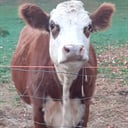What is a band of warm ocean water that develops in the central and east-central equatorial Pacific?
El Niño is the warm phase of the El Niño–Southern Oscillation (ENSO) and is associated with a band of warm ocean water that develops in the central and east-central equatorial Pacific (between approximately the International Date Line and 120°W), including the area off the Pacific coast of South America. The ENSO is the cycle of warm and cold sea surface temperature (SST) of the tropical central and eastern Pacific Ocean. El Niño is accompanied by the high air pressure in the western Pacific and low air pressure in the eastern Pacific. El Niño phases are known to occur close to four years, however, records demonstrate that the cycles have lasted between two and seven years. During the development of El Niño, rainfall develops between September–November.
Developing countries that depend on their own agriculture and fishing, particularly those bordering the Pacific Ocean, are usually most affected. In American Spanish, the capitalized term El Niño means "the boy". In this phase of the Oscillation, the pool of warm water in the Pacific near South America is often at its warmest about Christmas. The original name of the phase, El Niño de Navidad, arose centuries ago when Peruvian fishermen named the weather phenomenon after the newborn Christ. La Niña, chosen as the "opposite" of El Niño, is American Spanish for "the girl".
More Info:
en.wikipedia.org





